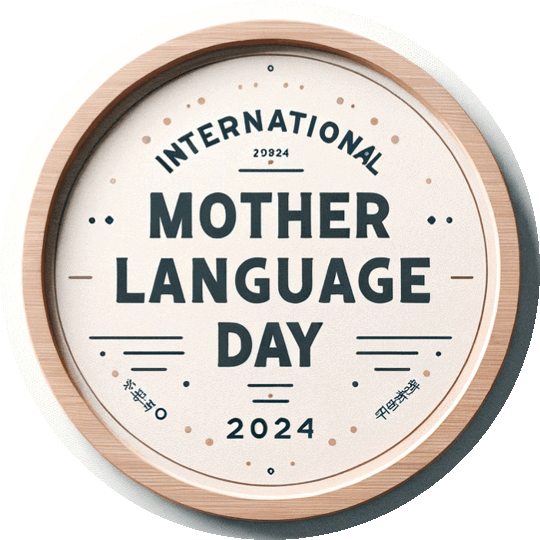Mother Language Day, February 21, 2024
2024-02-29
International Mother Language Day, February 21st, was established by UNESCO in 1999 to promote linguistic and cultural diversity and multilingualism. It commemorates the 1952 Language Movement in Bangladesh, advocating the recognition of Bangla as one of the two national languages of then Pakistan. There are some 7,000 languages. Every two weeks one language ceases to exist. Over half of the world's population is bilingual or multilingual. Papua New Guinea is the most linguistically diverse country in the world: 800+ languages. Rotokas, spoken there, has one of the smallest alphabets in the world, 12 letters. Dumi, in Nepal, is one of the rarest, with only a handful of speakers left. South Africa has 11 official languages. On La Gomera, Canary Islands, the Silbo Gomero language translates Spanish into whistling. Some Amazonian languages, like Pirahã, have no fixed words for specific numbers and use terms like "small quantity" or "larger quantity". !Xóõ, from Botswana, has one of the largest inventories of sounds, including numerous clicks. Constructed languages, conlangs, have been created for use in fiction or in international communication. E.g. Esperanto, Na'vi (Avatar), Klingon (Star Trek), Valyrian (Game of Thrones). Languages are an inherent component of cultural identity. Every language, no matter how small, carries equal weight and significance in the human heritage. https://bit.ly/3IrQbGZ https://bit.ly/48snxzI Art&Text supported by ChatGPT.
Felix Hoffmann, a chemist at the German pharmaceutical company Bayer, synthesized acetylsalicylic acid in a pure and stable form in 1897. Bayer patented the drug on March 6, 1899 under the name "Aspirin," issued in the US as patent 644,077, on 27 February 1900. It quickly became the world's most widely used medication (and it is today as of 2017). Aspirin was touted for its pain-relieving, anti-inflammatory, and antipyretic (fever-reducing) properties. It was indicated for a variety of conditions, including headache, dental pain, menstrual cramps, muscle and joint aches, and fever. Aspirin started as powder, but soon enough was pressed into tablets with the iconic Bayer logo. In the 1970s, studies began to reveal its potential in preventing heart attacks, leading to its use in low doses for cardiovascular protection. In 1982, Sir John Vane won a Nobel Prize for discovering aspirin's action in inhibiting prostaglandin synthesis. Today, Aspirin is on the World Health Organization's List of Essential Medicines, highlighting its importance in global health. It's estimated that annually, over 60 billion Aspirin tablets (35,000+ tons) are consumed worldwide, and a trillion since 100 years, underscoring its enduring impact on medicine. Its adoption for cardiovascular disease prevention and its role in pain and fever management make it a cornerstone of modern therapy. More: https://en.wikipedia.org/wiki/History_of_aspirin Art&Text🫶ChatGPT.
The Dominican Republic celebrates its Independence Day on February 27th, marking the country's independence from Haiti in 1844. This day commemorates the culmination of the Dominican War of Independence, led by Juan Pablo Duarte, Francisco del Rosario Sánchez, and Matías Ramón Mella, who are considered the founding fathers of the Dominican Republic. These leaders were part of a secret society called La Trinitaria, which played a crucial role in the independence movement. The conflict was rooted in cultural differences between Haitians and Dominicans, alongside economic disputes. After years of Haitian rule, the Dominican Republic declared its independence in Santo Domingo. It was followed by a series of battles, with the final major conflict, the Battle of Santiago, occurring in 1844, solidifying Dominican sovereignty. Celebrations are centered around the Altar de la Patria at the "Parque Independencia" in Santo Domingo. This monument houses the remains of the founding fathers and serves as a focal point for nationalistic ceremonies. The day is marked by the tradition of wearing the national colors—blue, red, and white—and the extensive use of music and dance to celebrate. Parades, cultural performances, and patriotic displays run also across the nation. Dominican Independence Day celebrates the Dominican Republic's rich culture, traditions, and the enduring spirit of its people. https://en.wikipedia.org/wiki/Dominican_War_of_Independence Art&Text🫶ChatGPT&Photoshop AI.


